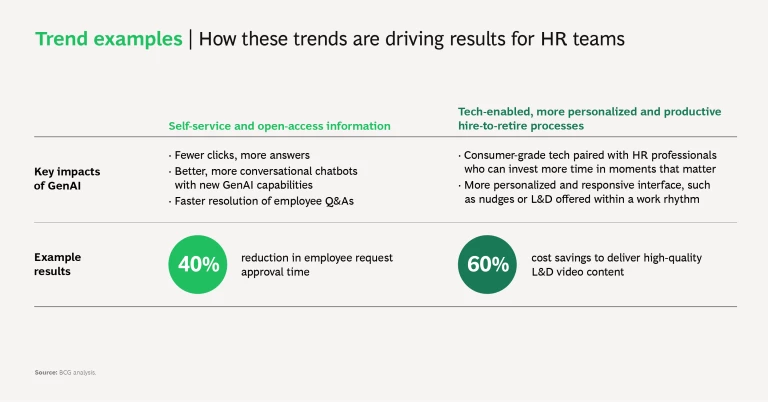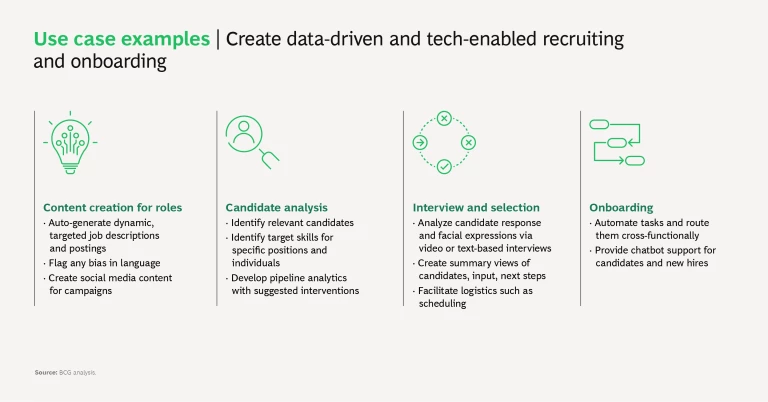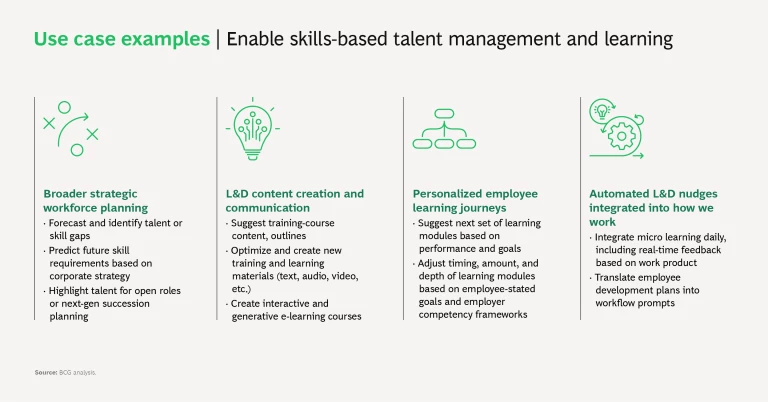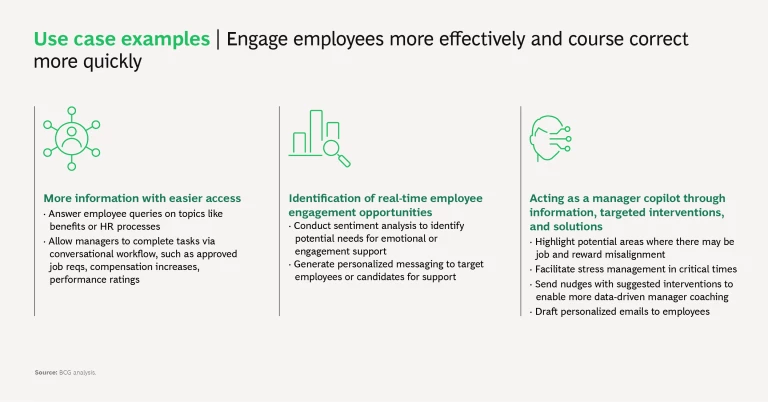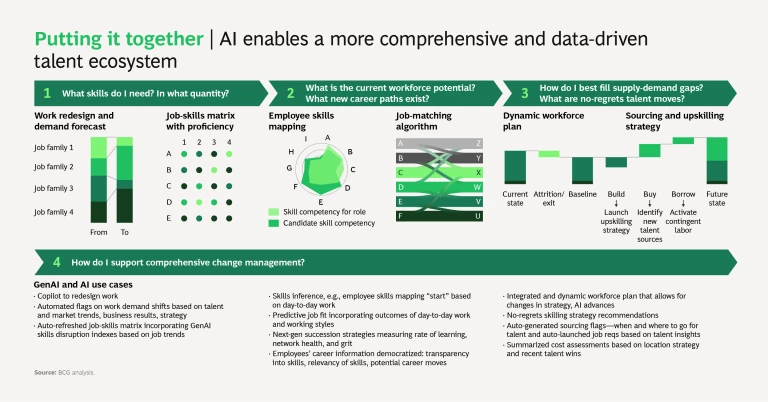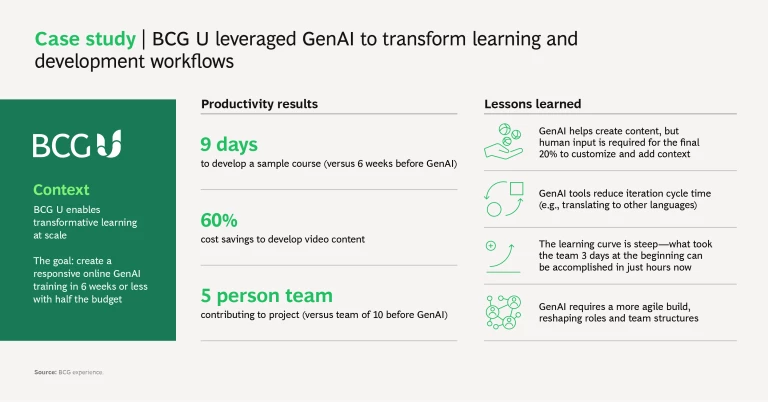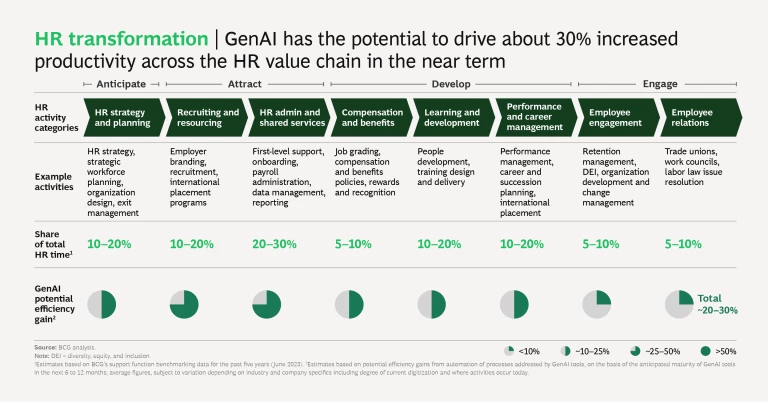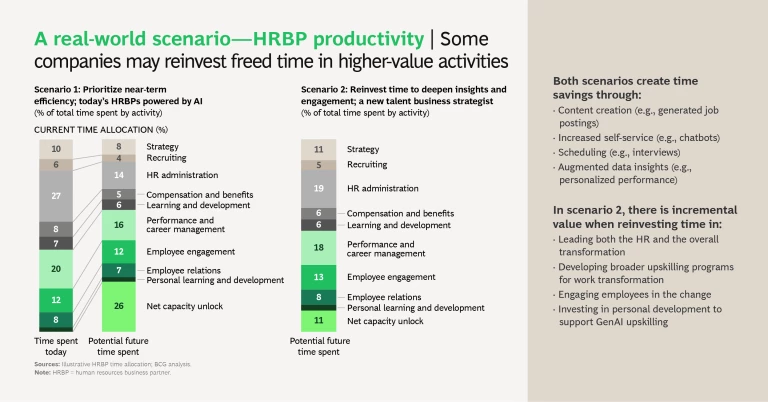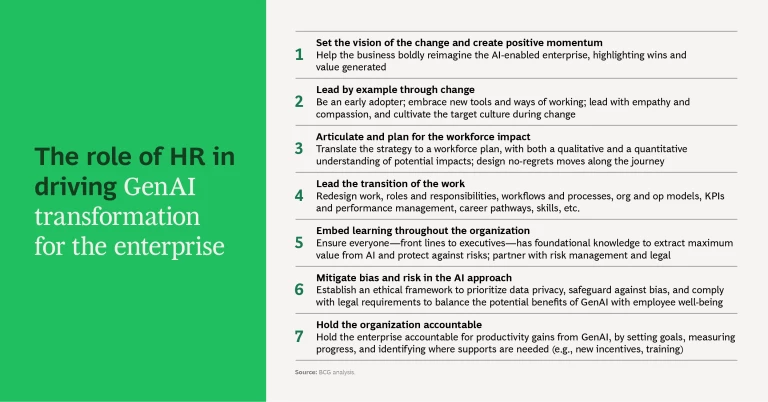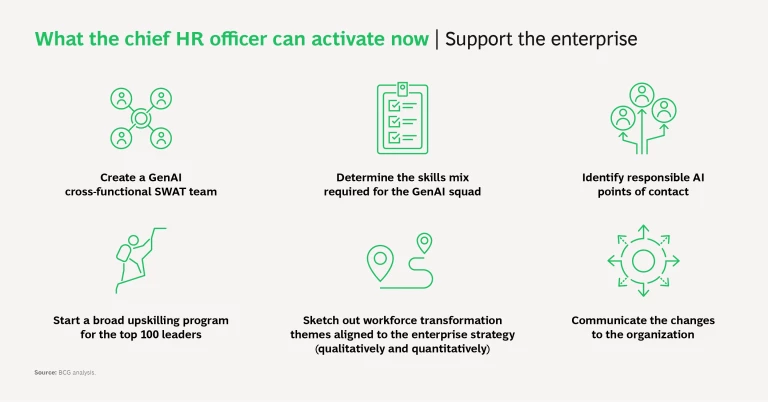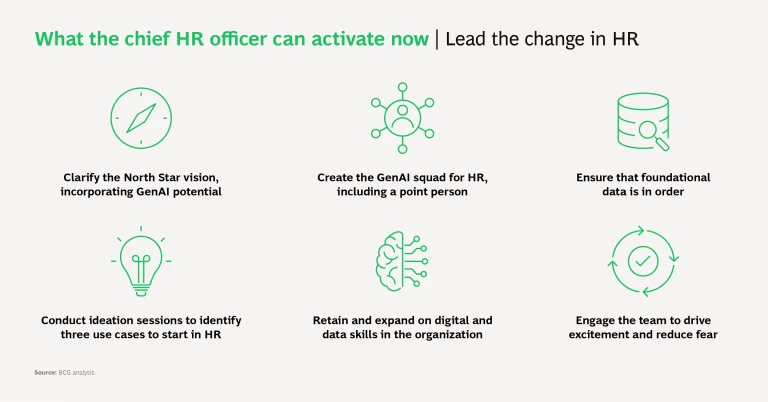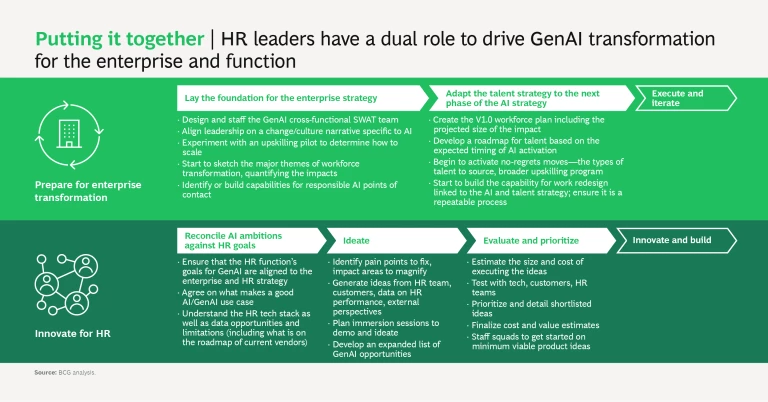Generative AI has done what no other technology trend has: accelerate HR’s engagement with artificial intelligence.
Adoption of AI tools has been slow to gain widespread momentum in the human resources space, but GenAI technologies—which can create content from disparate sources and quickly summarize multiple data sets—offer the HR discipline several powerfully compelling capabilities. Teams are already using chatbots and experimenting with AI in recruiting use cases, and as deployments bring efficiency and new insights to the people function, HR’s engagement with GenAI is set to escalate dramatically.
At the same time, executive teams are looking to HR to be a deeper, more insightful partner throughout the business. GenAI makes this future real. With HR continuing to shift its focus from administrative work to helping lead the company-wide strategic transformation that GenAI brings, the technology becomes a vital resource to upskill team members and unlock value as the function expands its influence across the organization. HR’s adoption of GenAI will also be an example to the rest of the business of how best to engage this critical, still-evolving technology in forward-thinking ways.
Executive teams are looking to HR to be a deeper, more insightful partner throughout the business.
How GenAI Impacts HR
GenAI transforms HR into a more strategic function with the following impacts.
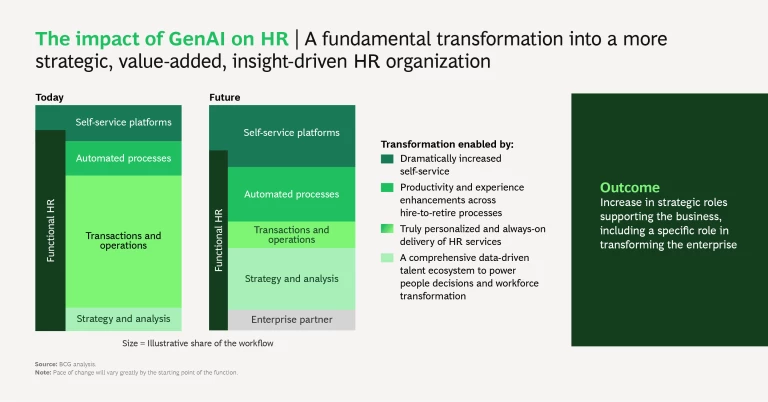
Dramatically Increased Self-Service. Employees have had mixed reactions to HR self-service in the past. But GenAI offers more conversational workflows and tailored information—just the sort of delivery that could boost adoption as more employees prefer GenAI’s ease of use in addressing their needs.
Productivity and Experience Enhancements. Leaders often use deep consumer insights to offer personalized, tech-enabled customer experiences. These same trends are now emerging for employees. With stronger automation and data insights, current GenAI use cases show three times faster content creation and visualization, automation of greater than 50% of tasks in an onboarding journey, and recruiting engagement rates that are twice as high as when personalized messages were written with GenAI.
In the moments that matter most, of course, employees want to connect with people. GenAI frees HR professionals to engage with the employees they serve and be present in the interactions that deliver higher satisfaction.
Truly Personalized, “Always on” Delivery of HR Services. GenAI-based HR “copilots” will guide employee and manager careers in real time. The technology helps HR know employees better: the rhythm of their work, the learning and development they require, when they may need a vacation, and if they would benefit from reminders of annual goals or other strategic programs. Managers can also customize onboarding plans, inspire high performers, and receive alerts to reconnect with a disengaged teammate.
A Comprehensive, Data-Driven Talent Ecosystem. Many companies have invested to better understand employee skills and drive talent upskilling and career planning. The question now is how to use this skills data to drive meaningful talent decisions across the business, not just in specific areas.
GenAI’s ability to join less structured data sources will enable more interconnected use cases, including talent assessment, developing career pathways, talent sourcing, and learning and development, as seen in the slide below. All this leads to a skills-based talent ecosystem linked to the company’s workforce strategy.
Increased Productivity with Ethical AI
GenAI’s capabilities unlock a new level of productivity while transforming the service model. With the right mix of maturity, clearly defined goals, and time, a balanced human and AI strategy could boost HR productivity up to 30% in the not-so-distant future. One early adopter in AI for HR has been able to reap financial benefits, cutting its annual budget by 10% year over year for the past three years.
To visualize the possibilities offered by a GenAI deployment in HR, consider how a global industrial goods company’s HR business partners spend time. Two scenarios then describe how a GenAI-enhanced HRBP supports the firm.
As shown in the slides below, one scenario unlocks 25% to 30% of HRBP time through GenAI deployments, including chatbots and automation solutions. This model would lean heavily on the HR copilot and manager to upskill staff through tech-based nudges. The result: HRBPs who are more productive, better able to support more employees given the reduction in administrative work.
The second scenario is to boost overall productivity and then reinvest the time freed up by GenAI efficiency. This scenario creates a version of the role—HR business talent strategists—to put time into deeper employee engagement, change management, and more strategic talent planning.
In each scenario, the HR organization and broader executive leadership team will see productivity gains, but they must decide to push for near-term cost savings or focus on driving greater talent effectiveness. Whichever choice the leaders make, GenAI deployments could create convincing results. Ultimately, HR leaders need to have a clear vision and North Star for the function to guide such decisions.
Of course, GenAI doesn’t just optimize the productivity of existing processes and activities. The technology lets HR reimagine how it serves talent, in turn changing the overall HR delivery model. Yet in the face of such change, the people function should always be cautious of GenAI’s many risks—especially when handling sensitive personnel information. For years, HR has been working to influence employee sentiment or decrease bias in real-time decision making. AI has the potential to further reduce the bias that exists in today’s processes—when done well. To get it right, HR will need to work closely with legal and business leaders to ensure that responsible AI is being implemented and that any bias apparent in GenAI systems is identified and addressed.
Leaders should anticipate a dynamic technology and regulatory environment, where new solutions and regulations are closely monitored. Humans remain critical to these advances. GenAI will be able to identify insights and summarize data, but HR will need to ensure that humans make business decisions that are sound, just, and well documented. This future is dependent on so many factors—only one of them being HR’s responsible use of GenAI.
Leading the Company’s GenAI Transformation by Example
Even as the early days of GenAI unfold, it is becoming clear that the entire workforce will transform as the technology brings new capabilities and objectives within reach. HR leaders need to help drive this broader change, just as their own function evolves.
Leading the change means getting started on several fronts, as shown in the slides here.
Engaging GenAI now will set up any HR team to deliver services in ways that the function is only starting to explore. Strive to use this evolving technology to guide the entire business forward—and keep employees satisfied and committed.
The authors thank Amber Conley, Jen Potvin, Rajiv Shenoy, Sebastian Ullrich, and the BCG U team for their contributions to this article.



